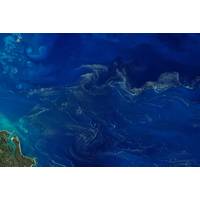
Modeling Micro-algae to Better Understand the Workings of the Ocean
the ocean.Recent studies, in the field and the lab, have shown the great diversity of diazotrophs and their adaptation to different environments. For example, while it was previously thought diazotrophs were confined to warm, clear tropical waters, some unicellular diazotrophs have been discovered in Arctic seas or in the darkness of the deep ocean.For a long time, however, researchers have taken the view that diazotrophs contribute little to carbon sequestration, because Trichodesmium – historically the most studied diazotroph – tends to stay on the ocean surface and to be little subject
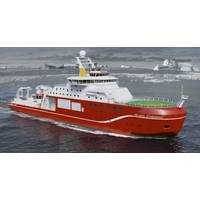
FarSounder Sonar for RRS Sir David Attenborough
City Region, U.K. is slated to be equipped with FarSounder's longest range sonar system, the FarSounder-1000. The new, state-of-the-art ship, owned by Natural Environment Research Council (NERC), will enable scientists to explore and undertake science in new areas of the Antarctic and Arctic seas. With the vessel’s ability to embark on longer voyages and explore some of the most remote aquatic regions of the world, the FarSounder sonar will primarily be used for navigation and obstacle avoidance. In addition, its technology and data can supplement the more traditional on-board
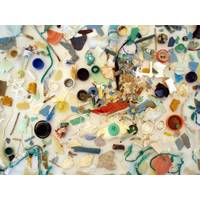
Arctic Seas a 'Dead End' for Floating Plastic
The Arctic is a dead end for floating plastic waste dumped in the Atlantic Ocean off Europe and the United States and swept north by ocean currents to a polar graveyard, scientists said on Wednesday. Levels of plastic found east of Greenland and in the Barents Sea off Norway and Russia were far higher than expected for the sparsely populated regions, according to the report showing how man-made pollution extends even to remote parts of the globe. "The northeastern Atlantic sector of the Arctic Ocean appeared as a dead end for the surface transport of plastic pollution," the
Researchers Develop Underwater Observatory
office Tönning, was used for the water protection ship "Neuwerk". The new zooplankton observatory now supplements the underwater node developed by the Helmholtz Center Geesthacht and the Alfred Wegener Institute as part of COSYNA (Coastal Observing System for Northern and Arctic Seas) and put into operation in the AWI underwater field Margate in 2012, north of Heligoland has been. This underwater node - an underwater power socket for power and internet access under water - offers the possibility to connect different sensors and devices under water and to operate them remotely
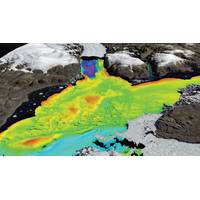
Kongsberg's Acoustic Scientific Research for RSS Sir David Attenborough
is required to meet the science requirements of the UK for a modern, state-of-the-art polar seagoing science platform, and for provision of logistical support for land-based polar science. The new ship will enable scientists to explore and undertake science in new areas of the Antarctic and Arctic seas, supported by an extensive, integrated KONGSBERG scientific research and mapping technology package, including: EM 122 Deep water multibeam system EM 712 Medium depth multibeam system TOPAS PS 18 Sub bottom profiler EA 640 Scientific echo sounder EK 80 Biological multi-freque
U.S. to Crack Down on Ocean Noise that Harms Fish
on sea creatures and more coordination with environmental and industry groups, the military and government. Some data is in short supply, since NOAA has assessed the abundance of only 17 percent of the marine mammal species that it is mandated to monitor. Noise also takes on greater urgency with Arctic seas increasingly open to shipping and development with the melting of ice from global warming. DEAFENING NEMO The scientists behind the project admit the ocean was never quiet. For millions of years it was filled with sounds ranging from the thunder of storms to the songs of whales. But fish
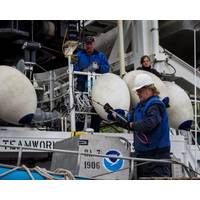
NOAA Deploys Survey Ships for Arctic Charting Projects
back to Captain Cook's voyages, long before the region was part of the United States,” said NOAA deputy under secretary for operations Vice Admiral Michael S. Devany in remarks directed to the crews of NOAA ships. “Your work this summer is a crucial mission in our determination to make the Arctic seas safer for shipping, sustenance and marine life.” NOAA said it will increase its charting activities in the Arctic to help ensure safe navigation as growing vessel traffic is anticipated in the region. Rainier and Fairweather will depart Kodiak this week to begin a summer
RS Signs Classification Agreement with Nordic Yards
; search of and salvage services to ships in distress; search, rescue, evacuation and accommodation of humans, medical assistance rendering; underwater engineering work. An MPSV 06 NY salvage ship will be able to engage in icebreaking operations in port and port vicinity as well as in freezing non-arctic seas at ice thickness not in excess of 1.5 m. Afore the ship there is a landing platform for helicopters. There is also a high-speed salvage workboat with a speed up to 35 knots and capacity up to 24 persons. To explore the sea bottom and damaged items as deep as to 1,000 m, a Scorpio remotely
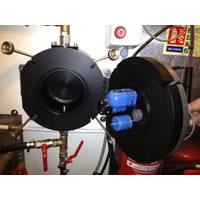
Xylem Launches New ‘FerryBox’ Water Quality Monitor
for its potential to provide much needed data, cost-effectively. FerryBoxes have now been installed in many countries including Australia, Chile, Japan and the USA. In Europe projects such as EMECO (European Marine Ecosystem Observatory) and COSYNA (Coastal Observation System for Northern and Arctic Seas) are utilising the technology to deliver data to a wide user community. The SOOGuard FerryBox – what’s new In the past, FerryBoxes have been custom-built and as a result, some of the older systems are complex and difficult to service or maintain. A key objective for the SOOGuard


 February 2025
February 2025





